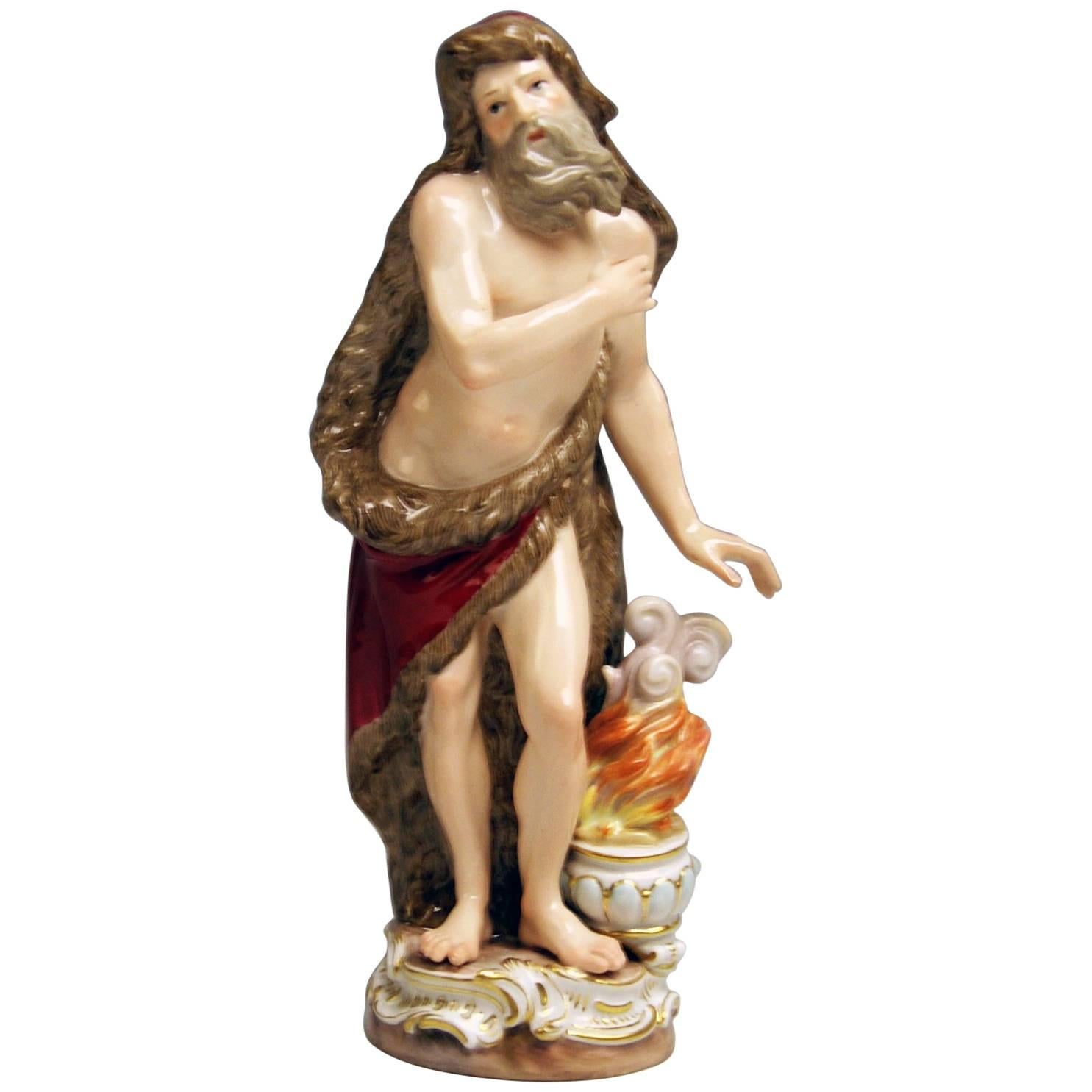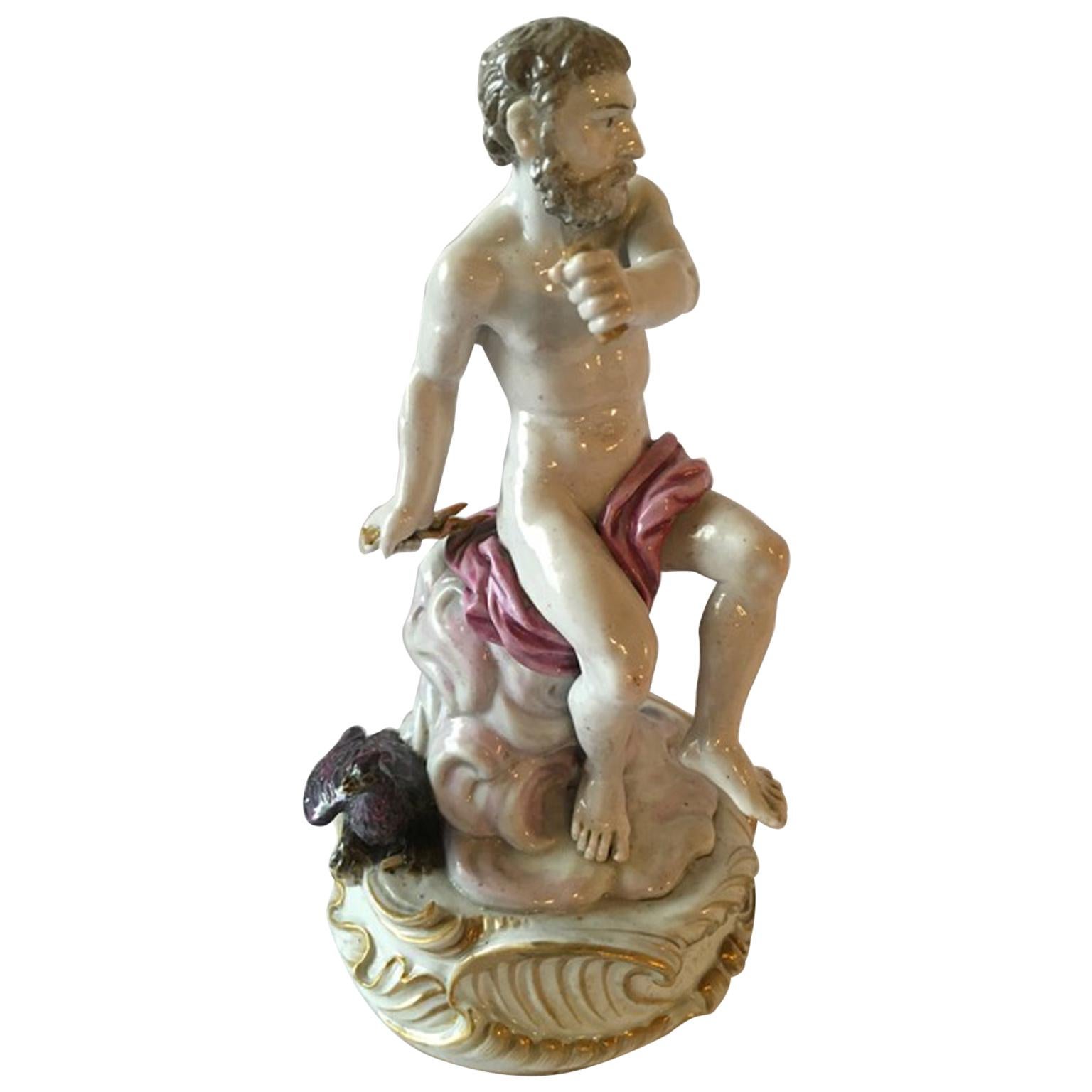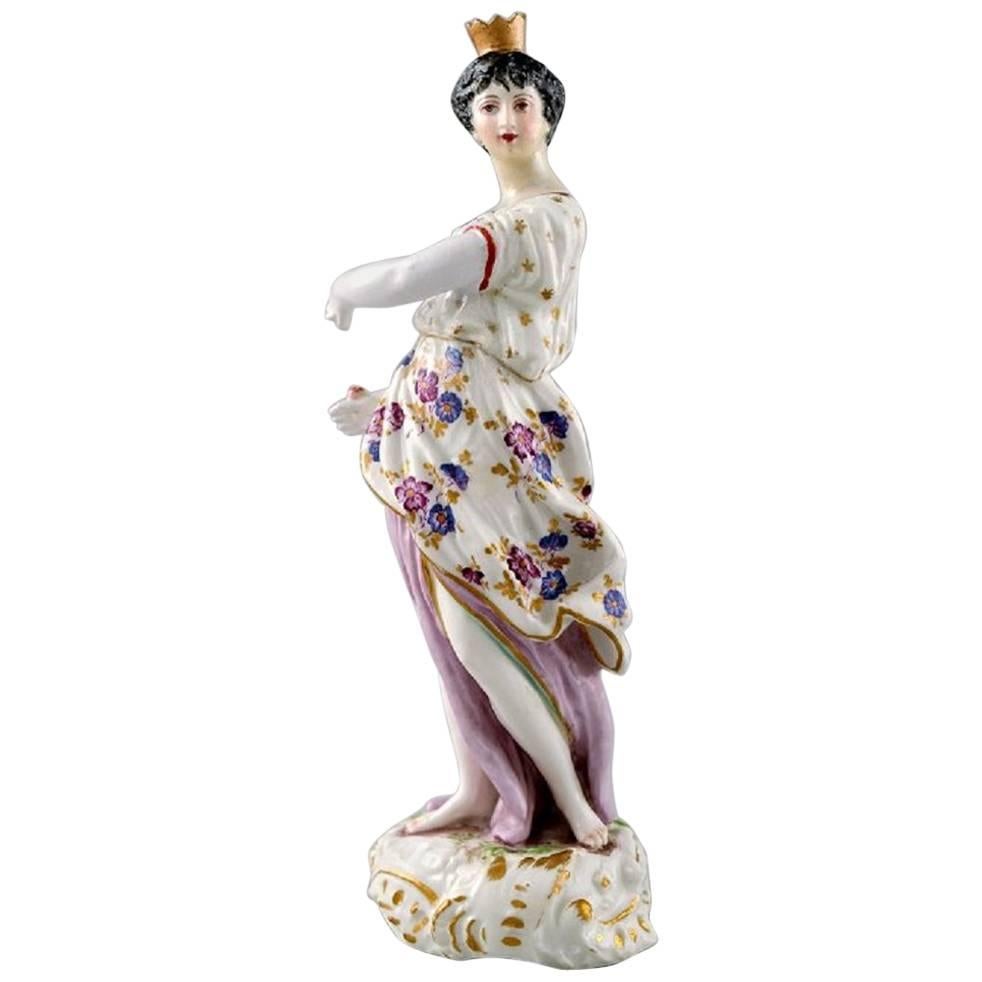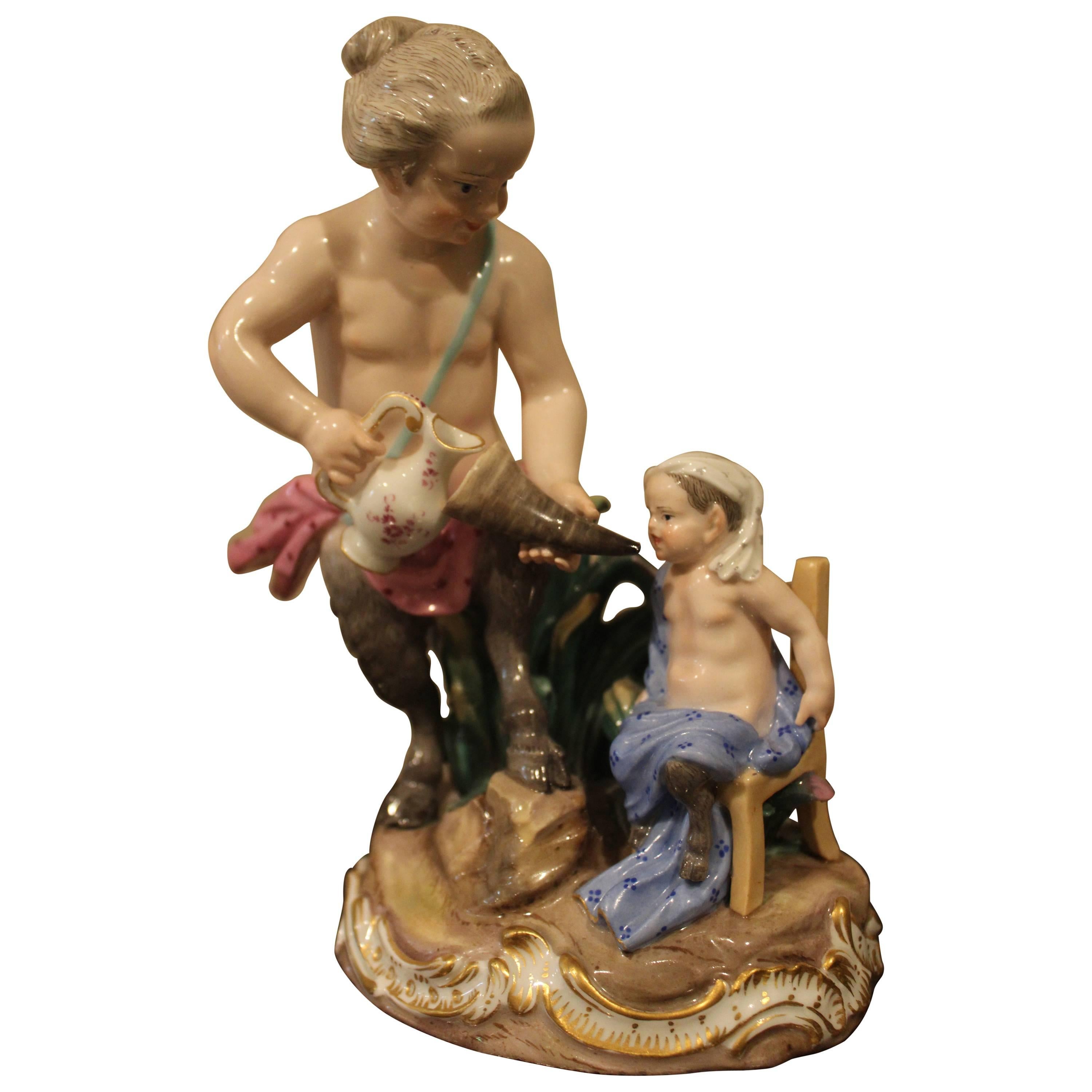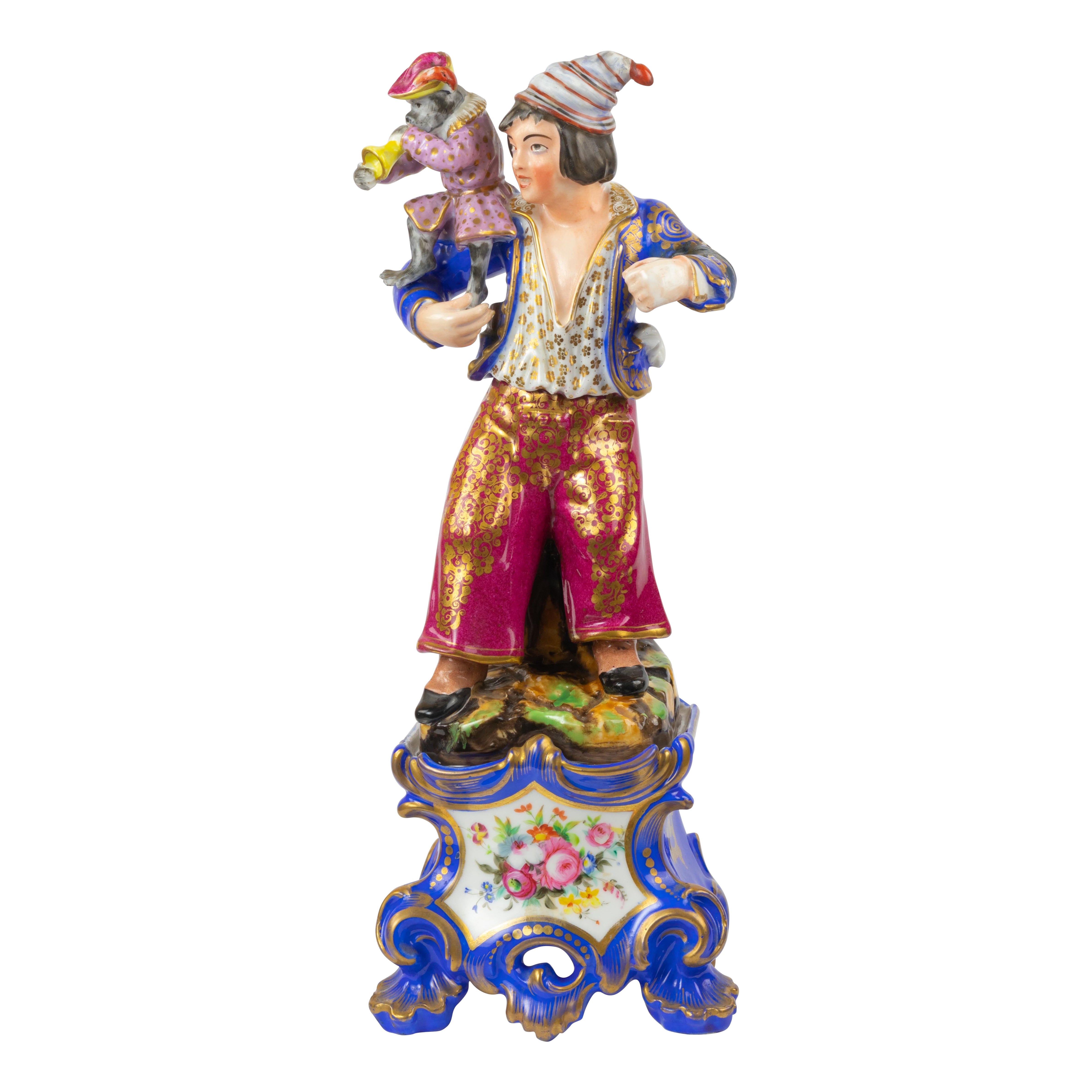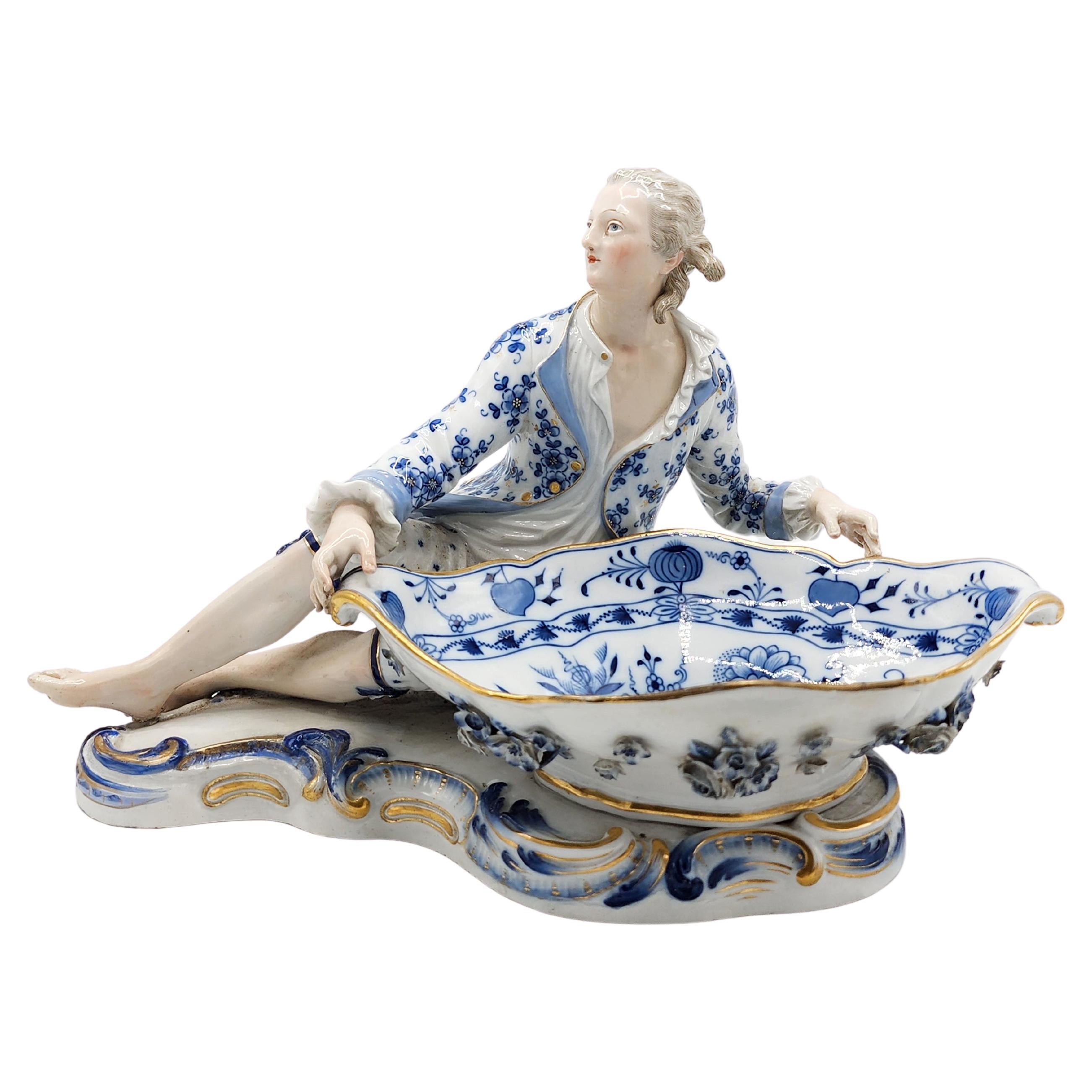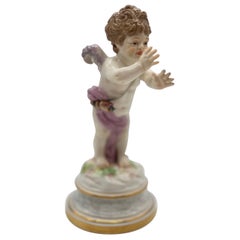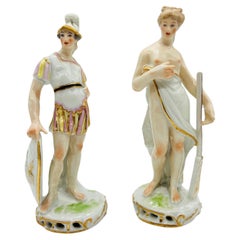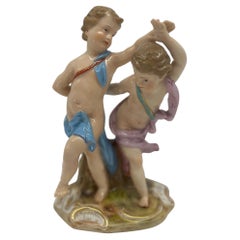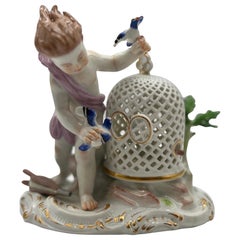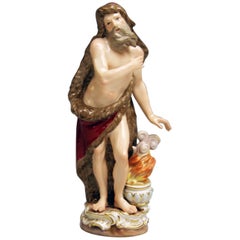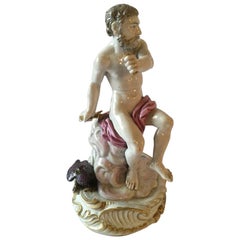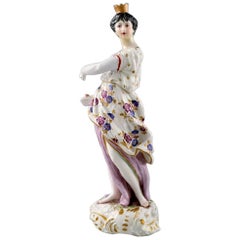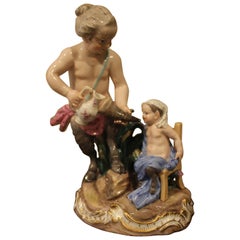Items Similar to Sevres Style "Winter" Porcelain Figure After Meissen Friedrich Elias
Want more images or videos?
Request additional images or videos from the seller
1 of 10
Sevres Style "Winter" Porcelain Figure After Meissen Friedrich Elias
$695
£524.50
€600.47
CA$980.18
A$1,076.12
CHF 561.41
MX$13,022.50
NOK 7,036.43
SEK 6,630.16
DKK 4,482.35
About the Item
This exquisite porcelain figure, titled "Winter," is produced after with the influence of the artistry of Friedrich Elias Meyer (circa 1723–1785), a distinguished sculptor for the Meissen porcelain manufactory. Rendered with remarkable attention to detail, the figure portrays an allegorical representation of winter, cloaked in a fur-lined robe, with elements symbolizing the season's chill and solitude.
The sculptural composition is characterized by its dynamic posture and finely modeled facial expression, capturing the contemplative essence of winter. The figure is adorned with lavish gilding that accentuates the intricate scrollwork on the Rococo-style base, further enhancing its opulent appeal. The meticulous hand-painted detailing reflects the mastery of European porcelain craftsmanship during the 18th century, paying homage to the tradition of allegorical figures popularized by Meissen.
The underside bears an interlaced “L” mark, indicative of the Sevres mark - but we do not believe it is authentic. We believe this piece is a later interpretation inspired by Meyer's original designs for Meissen. Such figures were highly coveted among European aristocracy, serving as decorative centerpieces in palatial settings.
This allegorical "Winter" figure stands as a testament to the enduring influence of Friedrich Elias Meyer and the cross-cultural artistic exchange between the Meissen and Sevres manufactories. It exemplifies the elegance and sophistication associated with Rococo porcelain art, making it a remarkable addition to any collection of fine European ceramics.
Measures: 9" h x 4" w x 4" d.
- Similar to:Meissen Porcelain (Maker)Manufacture Nationale de Sèvres (Maker)
- Dimensions:Height: 9 in (22.86 cm)Diameter: 4 in (10.16 cm)
- Style:Rococo (In the Style Of)
- Materials and Techniques:
- Place of Origin:
- Period:
- Date of Manufacture:20th century
- Condition:Wear consistent with age and use. Minor wear commensurate with age and use. One hand has been damaged with old restoration - photographed.
- Seller Location:Atlanta, GA
- Reference Number:1stDibs: LU7838243855372
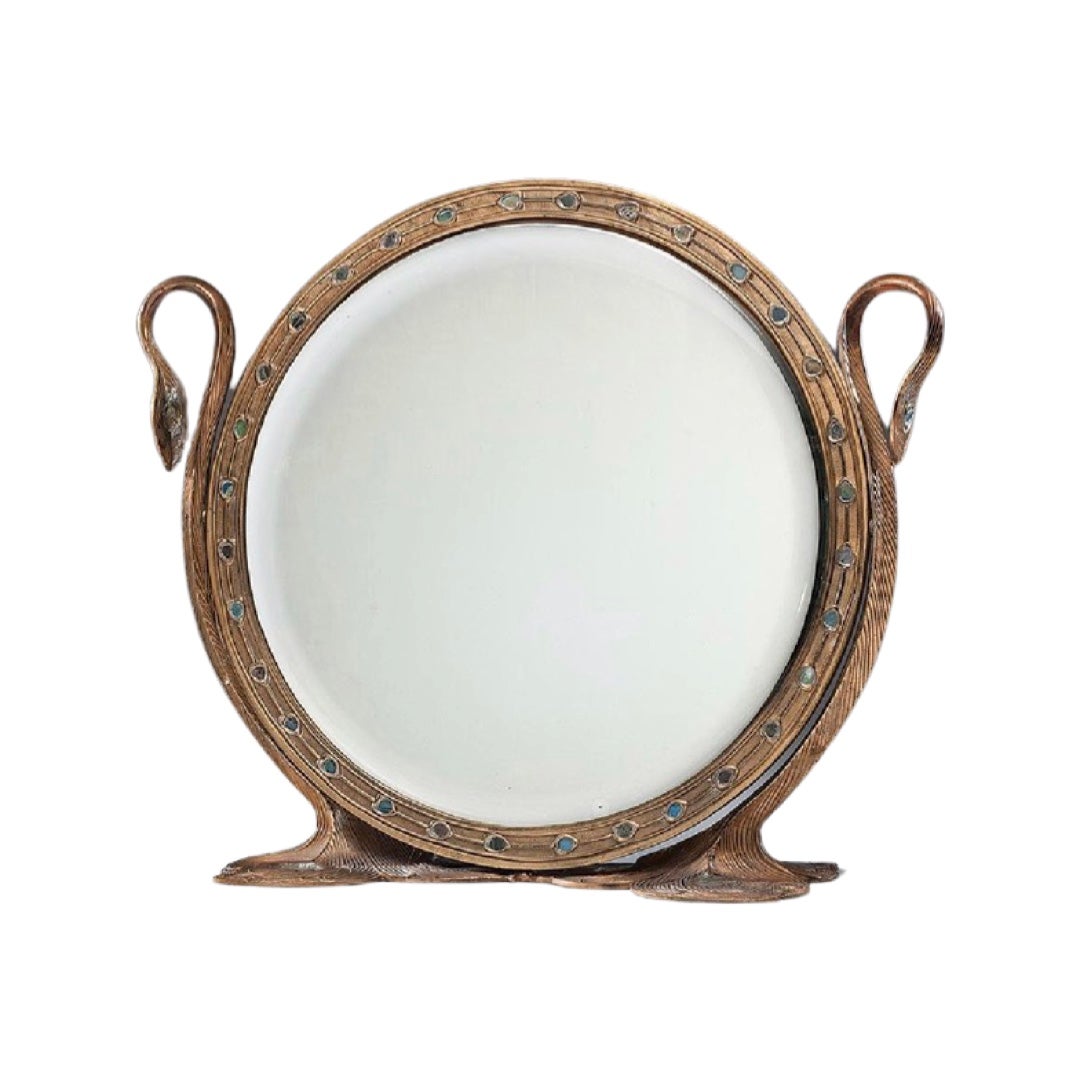
About the Seller
5.0
Platinum Seller
Premium sellers with a 4.7+ rating and 24-hour response times
Established in 2012
1stDibs seller since 2022
229 sales on 1stDibs
Typical response time: <1 hour
- ShippingRetrieving quote...Shipping from: Randolph, MA
- Return Policy
Authenticity Guarantee
In the unlikely event there’s an issue with an item’s authenticity, contact us within 1 year for a full refund. DetailsMoney-Back Guarantee
If your item is not as described, is damaged in transit, or does not arrive, contact us within 7 days for a full refund. Details24-Hour Cancellation
You have a 24-hour grace period in which to reconsider your purchase, with no questions asked.Vetted Professional Sellers
Our world-class sellers must adhere to strict standards for service and quality, maintaining the integrity of our listings.Price-Match Guarantee
If you find that a seller listed the same item for a lower price elsewhere, we’ll match it.Trusted Global Delivery
Our best-in-class carrier network provides specialized shipping options worldwide, including custom delivery.More From This Seller
View AllAntique Meissen Porcelain Model L125 Figure of A Cupid Mocking
By Heinrich Schwabe 1, Meissen Porcelain
Located in Atlanta, GA
Meissen, 19th century.
A fine quality Meissen porcelain figure featuring a cupid figure draped in a purple cloth with petite wings and very realistic features. This piece was design...
Category
Antique 19th Century German Porcelain
Materials
Porcelain
$1,996 Sale Price
20% Off
Pair, Edme Samson Porcelain Figure Models of Mars & Venus After Meissen
By Samson & Cie
Located in Atlanta, GA
Samson, Edme Et Cie (Founded 1845), 20th century.
A two piece grouping of porcelain figures depicting Mars & Venus. Modeled after the Meissen originals.
"Samson began his career b...
Category
20th Century French Rococo Figurative Sculptures
Materials
Porcelain
$476 Sale Price / set
20% Off
Antique Meissen Porcelain Model of 2 Dancing Figures Circa 1815
By Meissen Porcelain
Located in Atlanta, GA
This antique Meissen porcelain figurine depicts two dancing figures and dates back to approximately 1815. The piece is crafted from high-quality porcelain and features intricate deta...
Category
Antique Early 19th Century German Figurative Sculptures
Materials
Porcelain
$1,996 Sale Price
20% Off
Antique Meissen Porcelain Boy & The Bird Cage Figure Model
By Meissen Porcelain
Located in Atlanta, GA
Meissen, 19th century.
A fine quality Meissen porcelain figurine depicting a young boy playing with his pet bird. The figure stands next to a pierced porcelain bird cage adorned wit...
Category
Antique 19th Century German Porcelain
Materials
Porcelain
$1,516 Sale Price
20% Off
Pr. Finely Executed Ornithological & Neoclassical Decorated Meissen Ewers 19th C
By Meissen Porcelain
Located in Atlanta, GA
A rare and exceptionally elaborate pair of Meissen porcelain ewers, dating to the mid-19th century, executed in a richly sculptural Rococo Revival idiom, each marked beneath with the...
Category
Antique Mid-19th Century German Neoclassical Porcelain
Materials
Enamel
Meissen Porcelain "Little Gardener With Basket" Model #2
By Meissen Porcelain
Located in Atlanta, GA
Nice small figurine of a little girl in dress and flowers, made by famous German manufactory Meissen. The model was created in 1770s by Johann J. Kändler as a part of "Gärtenkinder"...
Category
20th Century German Figurative Sculptures
Materials
Porcelain
$556 Sale Price
20% Off
You May Also Like
Meissen Winter Season's Figurine C 83 Kaendler Kändler Johann Joachim Made 1880
By Johann Joachim Kaendler
Located in Vienna, AT
Meissen most remarkable figurine: Winter
Measures / dimensions:
height 8.07 inches / 20.5 cm
diameter of base 2.36 inches / 6.0 cm
Manufactory: Meissen
Hallmarked: Blue Meissen Sword Mark (glazed bottom)
First quality
Dating: 19th century / made circa 1880
Material: porcelain, glossy finish, multicolored painted
Technique: handmade porcelain
Style: Rococo
Modelled by:
Johann Joachim Kaendler (born in 1706 near Dresden / Germany-died 1775 in Meissen). Model C 83 created in period 1768-1770.
Kaendler was chief sculptor at Meissen manufactory as from 1742 until the year 1775. He is the most famous modeller Meissen manufactory ever had and created well-known series such as Shepherd Figurines, Comedian's Children, Gardener Children (with Acier), Paris Town Criers (with Reinicke and Meyer), Gallant Figurines, Asian Figurines etc. Additionally, Kaendler made, too, excellent models of animal figurines as well as of stunningly decorated vases.
Detailed description:
The Winter is of very interesting appearance / it is a long-bearded nude old man...
Category
Antique 1880s German Rococo Porcelain
Materials
Porcelain
Europe 18th Century Attribuited to Meissen Porcelain Giove Figurine
By Meissen Porcelain
Located in Brescia, IT
Elegant 18th century porcelain figurine of Giove, attribuited to Meissen. As to put in evidence the armony and beauty of colors.
With certificate of authenticity.
Category
Antique Mid-18th Century German Baroque Porcelain
Materials
Porcelain
Antique French Samson Porcelain Figurine, Mid-Late 19th Century
Located in København, Copenhagen
Antique French Samson porcelain figurine, mid-late 19th century.
Overglaze.
In perfect condition.
Measures 18 cm. X 7 cm.
Four figures in the same series are on stock.
Category
Antique 19th Century French Baroque Porcelain
$512 Sale Price
20% Off
Porcelain Figure, Meissen, 19th Century
Located in Belmont, MA
Meissen porcelain figure of a faun with her child. The child is sitting on a small chair while his mother is offering him to drink from a horn. Beautiful figure with passion for deta...
Category
Antique 1880s German Baroque Figurative Sculptures
Materials
Porcelain
$2,000 Sale Price
23% Off
Meissen Porcelain Porcelain Male Figure, Germany, 20th Century
Located in Lisbon, PT
A Meissen polychrome porcelain statue with a performer dressed in flamboyant red trousers with gold detailing, a patterned shirt, and a royal blue coat with elaborate gilding.
Resti...
Category
20th Century German Baroque Revival Figurative Sculptures
Materials
Porcelain
$1,628 Sale Price
20% Off
Meissen 19th Century Porcelain Figure "Gentleman"
By Meissen Porcelain
Located in Autonomous City Buenos Aires, CABA
Meissen 19th Century Porcelain Figure
"Gentleman"
Beautiful porcelain figure representing a man of the time, in white and blue with gold details with a bo...
Category
Antique 19th Century German Napoleon III Figurative Sculptures
Materials
Porcelain
More Ways To Browse
Meissen Winter
Haviland Limoges Gold
Hutschenreuther Coffee
Irish Belleek
Knife Porcelain
Limoges Birds
Limoges Cobalt And Gold
Limoges Yellow
Lowestoft Porcelain
Meissen Cherub Figurine
Meissen Coffee Set
Meissen Porcelain Coffee Set
Meissen Porzellan
Meissen Trays
Minton Cup
Paris Royal Porcelain
Peter Strang
Porcelain German Dessert Sets
